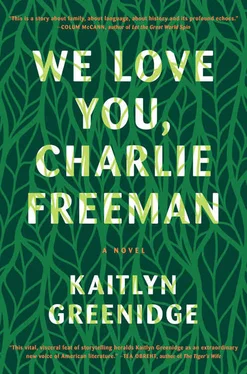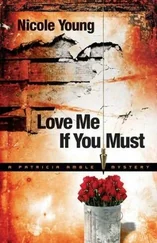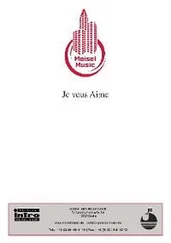For a half year, she was solved. Her teachers gladly accepted her notes, relieved to have a bona fide reason to ignore her. They palmed the sheets of paper and trained their eyes to forget her for the rest of the day. Laurel moved silently through the school’s hallways and the stream of calls and shouts and giggles ebbed and flowed around her. She felt proud, contained within herself, a smooth, perfect rock at the bottom of a river. Not a part of the current, it was sure, but not because she wasn’t good enough to be counted as water but because she was made up of a different element entirely — she was silent and strong and adamantine stone. When she was mute, Laurel was finally happy. She’d bucked the spoken word.
It was Nancy who ruined it for her, who found a semester’s worth of discarded notes in the bottom of a battered schoolbag, who marched Laurel to class and said to the teacher, her voice shaking to stay calm, “Why didn’t you ask her to speak?” and the teacher, perplexed, “Because we thought this was better,” and Nancy again, her voice nearly hoarse with the effort to stay cordial, to not show her anger, “Please treat her like everyone else. Teach her like everyone else. She needs to speak like everybody else. Please ask her to speak.”
Nancy hustled Laurel out of the classroom and into the cab of their pickup truck. Before she even put the key in the ignition, Nancy reached for Laurel’s golf pencil and silently, efficiently, broke it down into splinters. She gathered all the pieces in her fist, rolled down her window and tossed them on to the curb.
“We’ve got enough problems out here,” she told Laurel as she brushed the lead dust off her palms. “You don’t want to make being peculiar one of them.”
Being the only black family for a one-hundred-mile radius had one benefit. Laurel and her parents were famous. For nearly a decade running, the Quincys’ tree farm was the only entry for the entire state of Maine in The Colored Motorist’s Guide to America . They were, officially, the northernmost Negroes in the United States. Day-trippers from Boston, defiant honeymooners, bored servicemen on leave from the Navy Yard in Portsmouth, New Hampshire — they all came to the Quincy tree farm to gawk and take pictures. The Colored Motorist’s Guide told them where they could and could not sleep, in what towns the citizens would shoot them if they stayed there after dark, and here, in a book that listed what was possible and what was not, was the impossible printed plain on a page: Negroes in Maine.
The summer Laurel was eleven, the Hallelujah School for the Colored Deaf found the tree farm. They came at the end of the season, in a white rusting school bus, with their name printed on the side in bright blue paint. The bus pulled up alongside the farmhouse’s front gate and idled as about a dozen boys and girls pressed their faces to the windows and stared at Laurel where she played. She ignored them.
She was bored of tourists. They were black, but they spoke to her parents with a condescension Laurel felt in her bones, though she didn’t have a word for it yet. “It’s a living, I guess,” they said, while drinking her parents’ lemonade. And the kids who came with them, who hung over the sides of doors chewing gum and staring at the jagged ends of Laurel’s hot-comb pressed hair, spoke too quickly, in a high pitch and with a force Laurel found bewildering. It was giddiness that made them talk like that, something Laurel had never heard before and so could not understand. Here was an even harder truth to live with: she couldn’t trust any words, even when the people speaking them looked like her.
So Laurel pretended not to hear the bus’s engine.
The bus door folded open and a woman came down the stairs. She took the liberty of opening the Quincys’ front gate herself, and she walked up to where Laurel sat in the grass drawing in her notebook. She was probably only about nineteen or twenty, but she seemed like an adult to Laurel. The woman wore a flowered skirt pressed into sharp pleats, but when she held out her hand Laurel could see faint stains on the armpits of her blouse.
The woman said: “You’re the Quincys? You live here?”
Nancy came from the house and into the yard and shook the woman’s hand. The woman said that her name was Mary Ann Grannum and she was a teacher at a colored school for the deaf in South Carolina. They paid for their classes by touring the country every summer in an acting troupe. Nancy asked, “How do the students give their lines?” and Mary Ann smiled. “We’re special.”
They came from a place that had been forgotten by time, a school founded to teach signing to the colored deaf, started right after the Civil War by well-meaning Yankees and quickly taken over by the colored citizens themselves. Over the years, when other deaf schools banished sign language, declared it backward and a threat to the wholesome spoken word, subscribed to the theory that sign language would encourage the deaf to marry only each other and create a perpetuating race of non-hearers, and swaddled the hands of their most defiant students in thick cotton mittens, the students at the Hallelujah School paid no heed to any of that and kept signing. They became a rarity: black children who could speak with their hands.
The Hallelujah School for the Colored Deaf’s all-sign-language productions were famous in their home state, Mary Ann explained, and that summer was their first tour of the North. It ended in Portsmouth, New Hampshire, where there were still black faces in the audience. They were certain they wouldn’t see anyone any farther. But then they read the entry in their Colored Motorist’s Guide and so they’d decided to see the impossible before they headed back south.
Nancy led Mary Ann and her students around the farm, Laurel following from a few feet back, trying not to seem too interested. There were ten performers in the troupe, most younger than her, seven or eight years old, but there were a couple adolescents: a girl and a boy, both magnificent versions of fourteen who walked with such assurance, that Laurel, sulking behind them, was ashamed of her own steps.
Laurel had thought the deaf would be soundless, but these people weren’t. Some made a careening sound as they walked. Mary Ann, the teacher, breathed in soft, heavy sighs through her mouth. Laurel liked the sound. The visitors had a queer scent, too, like a damp swath of canvas that had dried in grass.
The tour ended in the kitchen, in the mudroom where Mary Ann told her students, in spoken words, to stand in a line, and Nancy poured glasses of milk for each of them. The two teenagers, the boy and the girl, were the last to enter the kitchen, and as soon as they came through the door they got excited. They raised their hands eagerly, opened their eyes wide, and the boy made a high gasp. At the sound, Mary Ann turned, made a quick scan of the room, and gestured at the two of them. They lowered their hands, chastened.
Nancy frowned. “Is there something wrong?”
Mary Ann said, “It’s nothing.”
Nancy stopped pouring the milk.
“It’s your washing machine.”
“What about it?” The machine was an old hand-crank one, a heavy drum in the corner by the door, a wringer bolted to the top and a line of rust creeping up around its belly.
“We haven’t washed our clothes since we left South Carolina,” Mary Ann explained. The Laundromats along the way wouldn’t let them. Or rather, they could put their clothes in the washer, but they were watched the whole time and more than once accused of breaking a machine. They had an iron in the back of the van for keeping their costumes neat, and so they used this, pressing their sweaty shirts and blouses into straight lines. That’s why they smelled like burnt cloth.
Читать дальше










![Ally Carter - [Gallagher Girls 01] I'd Tell You I Love You But Then I'd Have to Kill You](/books/262179/ally-carter-gallagher-girls-01-i-d-tell-you-i-lo-thumb.webp)

